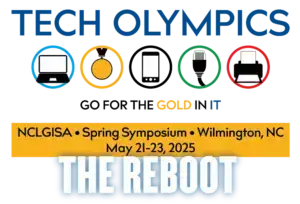The 911 emergency response system has been a critical component of public safety in the United States for decades. However, as technology has advanced and communication methods have evolved, the need for a more robust and advanced emergency response system has become increasingly apparent. Next Generation 911 (NG911) represents a significant step forward in modernizing emergency services, leveraging cutting-edge technologies to improve response times, enhance situational awareness, and ultimately, save lives.
This article explores the current state of NG911 implementation, the role of the Federal Communications Commission (FCC) in advancing this transition, and the potential impact of NG911 on public safety outcomes. By examining the challenges, opportunities, and future outlook for NG911, we will provide a comprehensive understanding of this transformative initiative and its implications for emergency services in the United States.
Understanding Next Generation 911
Next Generation 911 (NG911) is a groundbreaking upgrade to the legacy 911 system, designed to harness the power of modern communication technologies and data-driven solutions. Unlike the traditional analog-based 911 system, NG911 utilizes an Internet Protocol (IP)-based infrastructure, enabling seamless communication across multiple channels and devices. This transition allows for the integration of text, photos, videos, and enhanced location information, providing emergency responders with a more comprehensive understanding of the situation.
Multimedia Communications
One of the key advantages of NG911 is its ability to support multimedia communication. In addition to voice calls, citizens can now send text messages, images, and videos to 911 call centers, providing valuable context and details that can aid in emergency response. This feature is particularly beneficial for individuals who may be unable to speak due to safety concerns or medical conditions, as well as for those who are deaf, hard of hearing, or have speech disabilities.
Precise Location
Furthermore, NG911 enables more accurate and precise location tracking, leveraging advanced geospatial technologies to pinpoint the exact caller location. This enhancement is crucial in situations where the caller may be unable to provide their location verbally, such as during a medical emergency or in cases of domestic violence. By automatically transmitting location data to emergency responders, NG911 significantly reduces response times and improves outcomes.
Improved Call Routing
The transition to NG911 also brings about improvements in call routing and handling. With the legacy 911 system, calls are often routed based on the location of the cell tower or the caller’s billing address, which may not always correspond to their actual location. NG911 utilizes advanced routing protocols to ensure that calls are directed to the most appropriate public safety answering point (PSAP) based on the caller’s precise location, reducing the need for call transfers and minimizing delays in emergency response.
Multiple Data Points
NG911 opens up new possibilities for data analytics and intelligent decision-making. By integrating data from multiple sources, such as smart city sensors, traffic cameras, and weather systems, emergency responders can gain a more holistic understanding of the situation and allocate resources more effectively. This data-driven approach can help identify patterns, predict potential incidents, and optimize emergency response strategies, ultimately leading to improved public safety outcomes.
FCC’s Role in Advancing NG911

The Federal Communications Commission (FCC) has been at the forefront of efforts to modernize the 911 system and facilitate the nationwide transition to Next Generation 911 (NG911). Recognizing the critical importance of emergency services in ensuring public safety, the FCC has taken significant steps to establish guidelines, propose rules, and foster collaboration among stakeholders to accelerate the adoption of NG911.
On June 8, 2023, the FCC adopted a Notice of Proposed Rulemaking (NPRM) aimed at advancing the transition to NG911. This landmark proposal outlines a set of rules that would require wireline, interconnected Voice over Internet Protocol (VoIP), and Internet-based Telecommunications Relay Service (TRS) providers to deliver 911 calls in the IP-based format requested by Public Safety Answering Points (PSAPs) when they are ready to receive NG911 calls. By mandating the delivery of calls in the desired format, the FCC seeks to ensure seamless compatibility and interoperability between service providers and PSAPs, eliminating technical barriers to NG911 implementation.
The proposed rules would require wireline, wireless, interconnected VoIP, and Internet-based TRS providers to transmit all 911 calls to the designated point(s) specified by the 911 authority. This provision aims to streamline the call routing process and ensure that emergency calls are promptly directed to the appropriate PSAP, minimizing delays and improving response times. Under the proposed rules, these service providers would be presumptively responsible for the costs associated with delivering 911 calls to the designated points. However, the FCC has also acknowledged the flexibility for states and localities to establish alternative cost allocation arrangements with service providers, allowing for customized solutions that meet the specific needs and circumstances of each jurisdiction.
The FCC’s proposed rules have the potential to significantly accelerate the nationwide transition to NG911. By establishing clear guidelines and expectations for service providers and PSAPs, the FCC aims to create a more uniform and coordinated approach to NG911 implementation. The proposed rules also send a strong signal to the industry and public safety community about the urgency and importance of modernizing emergency services infrastructure.
The FCC’s leadership in advancing NG911 extends beyond the rulemaking process. The agency has also been actively engaged in outreach and education efforts, working closely with state and local authorities, industry partners, and public safety organizations to raise awareness about the benefits of NG911 and provide guidance on best practices for implementation. Through workshops, webinars, and other collaborative initiatives, the FCC has fostered a network of stakeholders committed to the successful transition to NG911.
As the nation moves closer to fully realizing the potential of NG911, the FCC’s role in establishing a regulatory framework, promoting interoperability, and facilitating coordination among stakeholders will be instrumental in ensuring a smooth and effective transition. The proposed rules and ongoing efforts by the FCC demonstrate a strong commitment to modernizing emergency services and enhancing public safety for all Americans.
State and Local Efforts in NG911 Transition

While the Federal Communications Commission (FCC) plays a crucial role in setting guidelines and proposing rules for the transition to Next Generation 911 (NG911), the actual implementation of this advanced emergency response system largely falls under the purview of state and local authorities. Across the United States, jurisdictions are at various stages of NG911 adoption, with some states and localities leading the charge as early adopters while others navigate the complexities of planning and transitioning to this new infrastructure.
Urgent Need
Many states have recognized the urgent need to modernize their emergency services and have taken proactive steps to facilitate the transition to NG911. Some states have established dedicated NG911 implementation committees or task forces, bringing together representatives from public safety agencies, service providers, and technology vendors to collaborate on strategic planning and resource allocation. These multidisciplinary teams work to assess the current state of emergency services infrastructure, identify gaps and challenges, and develop roadmaps for NG911 deployment.
Funding
Funding has been a critical consideration for states and localities in their NG911 transition efforts. Upgrading legacy systems and investing in new technologies requires significant financial resources. To address this challenge, some states have leveraged federal grant programs, such as the NG911 Grant Program administered by the National Telecommunications and Information Administration (NTIA) and the National Highway Traffic Safety Administration (NHTSA). These grants provide essential funding to support NG911 planning, implementation, and training initiatives at the state and local levels.
Good Examples
Several states have made notable progress in their NG911 transition efforts. For example, Indiana has been at the forefront of NG911 adoption, with a statewide Emergency Services IP Network (ESInet) that enables the seamless routing of emergency calls and data across jurisdictions. Similarly, the state of Virginia has implemented a statewide NG911 system, allowing for the integration of advanced location services and multimedia communication capabilities. These success stories serve as valuable case studies and provide lessons learned for other states and localities embarking on their own NG911 journeys.
NG911 Challenges
However, the transition to NG911 is not without its challenges. One significant hurdle is ensuring interoperability and seamless integration across jurisdictional boundaries. With varying levels of technological readiness and disparate legacy systems, achieving a cohesive and interconnected NG911 network requires close coordination and collaboration among neighboring jurisdictions. States and localities must work together to establish common standards, protocols, and interfaces to enable the smooth exchange of emergency data and communication.
Educating the Public
Another challenge lies in public education and awareness. As NG911 introduces new capabilities, such as text-to-911 and multimedia communication, it is crucial to educate the public about these features and how to utilize them effectively in emergencies. States and localities have been engaging in outreach campaigns, leveraging social media, public service announcements, and community events to raise awareness and promote the proper use of NG911 services.
Despite the challenges, state and local efforts in NG911 transition are making significant strides towards a more advanced and resilient emergency response system. By collaborating with stakeholders, securing funding, and sharing best practices, jurisdictions are paving the way for a nationwide NG911 network that will enhance public safety and improve outcomes for communities across the country.
Technological Advancements Enabling NG911

The transition to Next Generation 911 (NG911) is fueled by a range of technological advancements that are transforming the landscape of emergency services. At the core of NG911 is the shift from traditional analog infrastructure to an Internet Protocol (IP)-based network. This fundamental change enables the seamless integration of various communication channels, devices, and data sources, creating a more robust and flexible emergency response system.
Role of IP Networks
IP-based technology plays a pivotal role in enabling the advanced capabilities of NG911. By leveraging the power of IP networks, emergency calls and data can be transmitted more efficiently and reliably, reducing latency and improving the overall speed of emergency response. IP-based systems also allow for the integration of redundancy and failover mechanisms, ensuring that critical communication remains uninterrupted even in the face of network disruptions or failures.
Multimedia
One of the most significant advancements enabled by NG911 is the ability to support multimedia communication. Traditional 911 systems were limited to voice calls, but NG911 expands the possibilities by allowing citizens to send text messages, photos, and videos to emergency call centers. This multimedia capability provides emergency responders with valuable visual information, such as images of a suspect or a live video feed of an ongoing incident, enhancing situational awareness and enabling more informed decision-making.
Better Location Accuracy
Location accuracy is another area where NG911 excels. Advanced geospatial technologies, such as GPS and Geographic Information Systems (GIS), are being integrated into the NG911 framework to provide highly precise location data for emergency calls. This level of accuracy is particularly crucial in situations where the caller may be unable to verbally provide their location, such as during a medical emergency or in cases of domestic violence. By automatically transmitting accurate location information to emergency responders, NG911 can significantly reduce response times and improve outcomes.
Role of AI in NG911
The integration of emerging technologies, such as Artificial Intelligence (AI), Internet of Things (IoT), and 5G networks, further amplifies the capabilities of NG911. AI-powered systems can analyze vast amounts of data in real-time, helping to identify patterns, detect anomalies, and predict potential emergencies. For example, AI algorithms can monitor social media feeds and public data sources to identify early warning signs of natural disasters, public health crises, or criminal activities, enabling proactive emergency response.
Internet of Thiings
IoT devices, such as smart smoke detectors, wearable health monitors, and connected vehicles, can automatically transmit critical information to emergency services in the event of an emergency. These devices can provide valuable data points, such as the location of a fire, the vital signs of an individual experiencing a medical emergency, or the details of a car accident, allowing emergency responders to arrive at the scene with greater insight and preparedness.
Improved Network Speed
The advent of 5G networks promises to further revolutionize NG911 by providing ultra-fast, low-latency, and high-capacity wireless communication. 5G technology enables the rapid transmission of high-quality multimedia content, such as high-definition video and immersive virtual reality, enhancing the ability of emergency responders to assess and respond to complex situations remotely. The increased bandwidth and reliability of 5G networks also facilitate the deployment of advanced emergency response solutions, such as telemedicine and remote expert assistance.
As these technological advancements continue to evolve and mature, they will play an increasingly critical role in shaping the future of NG911. By harnessing the power of IP-based networks, multimedia communication, accurate location services, and emerging technologies, NG911 is poised to revolutionize emergency response, saving lives and improving public safety outcomes for communities nationwide.
Stakeholder Collaboration and Public Engagement

The successful implementation of Next Generation 911 (NG911) relies heavily on effective collaboration among various stakeholders, including public safety agencies, service providers, technology vendors, and the general public. Each stakeholder group brings unique perspectives, expertise, and resources to the table, and their active engagement is crucial to ensuring a smooth and effective transition to NG911.
Public Safety Agencys
Public safety agencies, such as law enforcement, fire departments, and emergency medical services, are at the forefront of NG911 implementation. These agencies have a deep understanding of the operational requirements and challenges faced in emergency response. Their input and collaboration are essential in shaping the technical specifications, standard operating procedures, and training programs associated with NG911. By working closely with service providers and technology vendors, public safety agencies can ensure that NG911 solutions are tailored to meet the specific needs of their communities and are compatible with existing emergency response workflows.
Service Providers
Service providers, including wireline, wireless, and VoIP providers, play a critical role in enabling the delivery of NG911 services. Their collaboration is necessary to ensure seamless interoperability and the reliable transmission of emergency calls and data across different networks and jurisdictions. Service providers must work closely with public safety agencies and technology vendors to implement the necessary infrastructure upgrades, establish interconnection agreements, and adhere to common standards and protocols. Collaboration among service providers is also essential to address issues related to call routing, location accuracy, and the handling of multimedia communication.
Technology Vendors
Technology vendors are the driving force behind the development and deployment of NG911 solutions. Their expertise in IP-based networks, software development, and emerging technologies is instrumental in creating innovative and scalable NG911 systems. Close collaboration between technology vendors and public safety agencies ensures that NG911 solutions are designed with the unique requirements of emergency response in mind. Vendors must also work closely with service providers to ensure seamless integration and interoperability across different platforms and networks.
Public Awareness
Public engagement and education are crucial components of NG911 implementation. As NG911 introduces new capabilities and changes the way citizens interact with emergency services, it is essential to raise public awareness and promote the proper use of these features. Public safety agencies and service providers must collaborate on outreach campaigns to educate the public about the benefits of NG911, such as text-to-911 and multimedia communication. These campaigns should leverage various channels, including social media, public service announcements, community events, and educational programs in schools and community centers.
Stakeholder collaboration extends beyond the initial implementation phase of NG911. Ongoing engagement and feedback mechanisms are necessary to ensure continuous improvement and adaptation to evolving needs and technologies. The FCC’s public comment periods, such as the one announced for the NG911 Notice of Proposed Rulemaking (NPRM), provide valuable opportunities for stakeholders to share their insights, concerns, and recommendations. Regular forums, workshops, and working groups that bring together representatives from different stakeholder groups can foster ongoing dialogue, knowledge sharing, and problem-solving.
Effective stakeholder collaboration and public engagement are essential to the success of NG911. By leveraging the collective expertise, resources, and commitment of public safety agencies, service providers, technology vendors, and the general public, the transition to NG911 can be accelerated, ensuring that communities across the nation benefit from advanced emergency response capabilities. Through ongoing collaboration and open communication, stakeholders can work together to overcome challenges, identify best practices, and shape the future of emergency services in the United States.
Challenges and Opportunities in NG911 Implementation

As the nation progresses towards the widespread adoption of Next Generation 911 (NG911), several challenges and opportunities arise that must be addressed to ensure a successful and seamless transition. One of the primary challenges is the issue of funding and resource allocation. Upgrading legacy 911 systems to NG911 requires significant financial investments in infrastructure, technology, and personnel training. Many states and localities face budget constraints and competing priorities, making it difficult to secure the necessary funding for NG911 projects. To overcome this challenge, innovative funding models, such as public-private partnerships and the leveraging of federal grant programs, need to be explored and implemented. Collaborative efforts among stakeholders to advocate for dedicated NG911 funding at the state and federal levels are also crucial to ensure the sustainability and long-term success of NG911 initiatives.
Another significant challenge lies in ensuring interoperability and seamless integration across jurisdictions. With varying levels of technological readiness and disparate legacy systems, achieving a cohesive and interconnected NG911 network can be complex. Establishing common standards, protocols, and interfaces is essential to enable the smooth exchange of emergency data and communication between different agencies and service providers. The development and adoption of the National Emergency Number Association (NENA) i3 standard, which defines the architecture and interfaces for NG911 systems, is a critical step in promoting interoperability. Collaboration among stakeholders to implement these standards and conduct regular testing and validation exercises is necessary to ensure the reliability and effectiveness
Discover how Carolina Digital Phone can elevate your emergency communication capabilities with our VoIP solutions — explore our services today.
Further Reading
To deepen your understanding of Next Generation 911 (NG911) and explore the advancements in communication technologies, consider the following resources:
- FCC & Next Generation 911: Delve into the Federal Communications Commission’s initiatives and resources dedicated to NG911 to understand the regulatory framework and future direction. Visit the FCC’s NG911 page.
- National Emergency Number Association (NENA): NENA offers comprehensive insights into the development, standards, and implementation of NG911 across the United States. Explore their resources for a deeper dive into the technical and operational aspects of NG911. Explore NENA’s resources.
- International Academies of Emergency Dispatch (IAED): The IAED offers a global perspective on emergency dispatch services, including the integration of NG911. Their research and training materials can provide insights into best practices and innovative approaches in emergency response. Visit IAED’s website.






